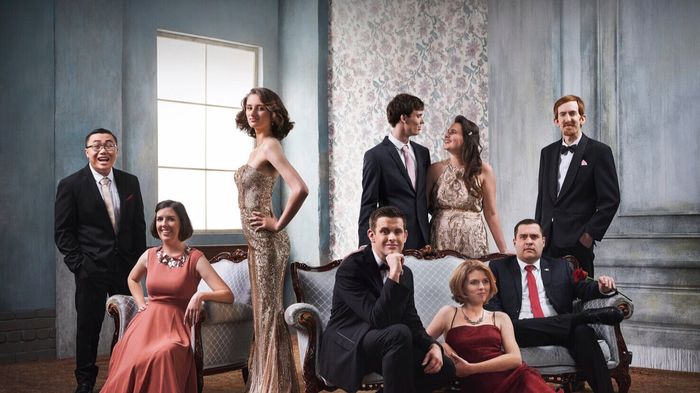The Film of the Forties: The Third Man
‘The Third Man’ sees a tumultuous perversion of expectations and a reappraisal of friendships in war-torn Vienna. Louis Young considers this timeless brilliance to be the defining moment of the decade
To encapsulate any decade in one film must never be an easy feat, but the 1940s presents a challenge like no other. It is challenging not only regarding the sheer volume of events, but also in terms of the fundamental transformation of the art form by the cinematic works of this period. Thus, “defining” this decade with a film is, frankly, impossible. Art will often play an outsized role in shaping broader culture and society – however, the historical momentousness of the 1940s means that this could not have occurred as it usually does. As such, the “defining” film of the 1940s must have been released towards the end of the decade, meaning exceptional films such as Citizen Kane (1941) or Casablanca (1942) must be ruled out. Instead, a film willing to bear the load of representing one of the most significant decades in human history must be found towards its end – and, indeed, it is, in The Third Man.
Released in 1949, four years after the end of the Second World War in Europe, it is set in Vienna; produced by London Films at Shepperton Studios in Buckinghamshire, and starring Joseph Cotton and Orson Welles, two Americans. The film is conducted primarily in English, which could have proved unfortunate, since English-language cinema has an unusual and irritating habit of inserting American or British characters into foreign locations and telling stories about those people and places from the Anglo-American perspective. The Third Man subverts this expectation, however, and its exceptional appeal lies in this very subversion.
“I never knew the old Vienna, before the war”, an unnamed narrator declares in the opening exposition. “I really got to know it in the classic period of the Black Market. We’d run anything if people wanted it enough”. Vienna had been divided into American, Russian, British, and French sectors, as well as an international zone policed by an international police force, after Austria’s occupation by Nazi Germany. “What a hope they had! All strangers to the place and none of them could speak the same language. Except a sort of smattering of German.” The narrator continues in this manner, before the American protagonist, brazen Western novelist and masculine naïf Holly Martins, arrives on a train to the city.
“Vienna itself exists in limbo, and it is difficult to blame any one character for existing as a part of its prevailing culture.”
The film may be roughly subdivided into two acts. In the first, Holly Martins play-acts as the conventional noble detective from one of his popular Westerns. He is informed that his childhood friend Harry Lime (the ever-outstanding Orson Welles) was involved in the black market before his supposed death in a car accident, believing his business venture to be “some petty racket with gasoline or something”. However, when he becomes suspicious of Lime’s death, he investigates.
It is notable how Holly Martins’ character, as the protagonist, is characterised. There is an underhand, yet clear, mockery of Martins’ one-dimensionality and naivety, especially in contrast with the delightfully secretive, sinister citizens of Vienna. This is yet another welcome inversion, this time of film noir’s tendency to produce complex heroes surrounded by unwitting pawns.
The second act opens at the police station, where Martins is informed of Lime’s true crime: a depraved scam involving the theft, dilution, and resale of scarce penicillin stolen from military hospitals. It is at this point where the film’s cinematic symbolism translates into a tangible form – it is clear that the old Vienna as it existed before the war is still alive, but the conflict and occupation have introduced a sort of dark decay to its structural and spiritual core. Lime is then introduced, in a sensational, utterly perfect scene; the old friends meet, and Holly Martins colludes with the police to catch him for good. It could be his character itself, or Welles’ electrifying performance, but one can never fully condemn Lime’s actions. Vienna itself exists in limbo, and it is difficult to blame any one character for existing as a part of its prevailing culture. How the two now very different Americans, friends before the war, interact in its aftermath is telling and is part of an overall technique of juxtaposition employed by director Carol Reed: light alongside shadow; Baroque majesty alongside piling mounds of stone rubble; the surface streets and the subterranean sewers.
The Third Man is an excellent, near perfect, timeless film, and to elaborate fully on how it achieves its brilliance would be too arduous a task. Its themes, though, transcend its art in how they express so lucidly the consequences of such a challenging decade for Europe. Good art must always, to some extent, imitate life; The Third Man takes the mood of decay and desperation, inflicted by a deadly war, felt throughout the continent, and swallows it whole.
 News / Cambridge bus strikes continue into new year16 January 2026
News / Cambridge bus strikes continue into new year16 January 2026 News / Uni members slam ‘totalitarian’ recommendation to stop vet course 15 January 2026
News / Uni members slam ‘totalitarian’ recommendation to stop vet course 15 January 2026 Science / Why smart students keep failing to quit smoking15 January 2026
Science / Why smart students keep failing to quit smoking15 January 2026 Interviews / The Cambridge Cupid: what’s the secret to a great date?14 January 2026
Interviews / The Cambridge Cupid: what’s the secret to a great date?14 January 2026 Comment / Will the town and gown divide ever truly be resolved?12 January 2026
Comment / Will the town and gown divide ever truly be resolved?12 January 2026









